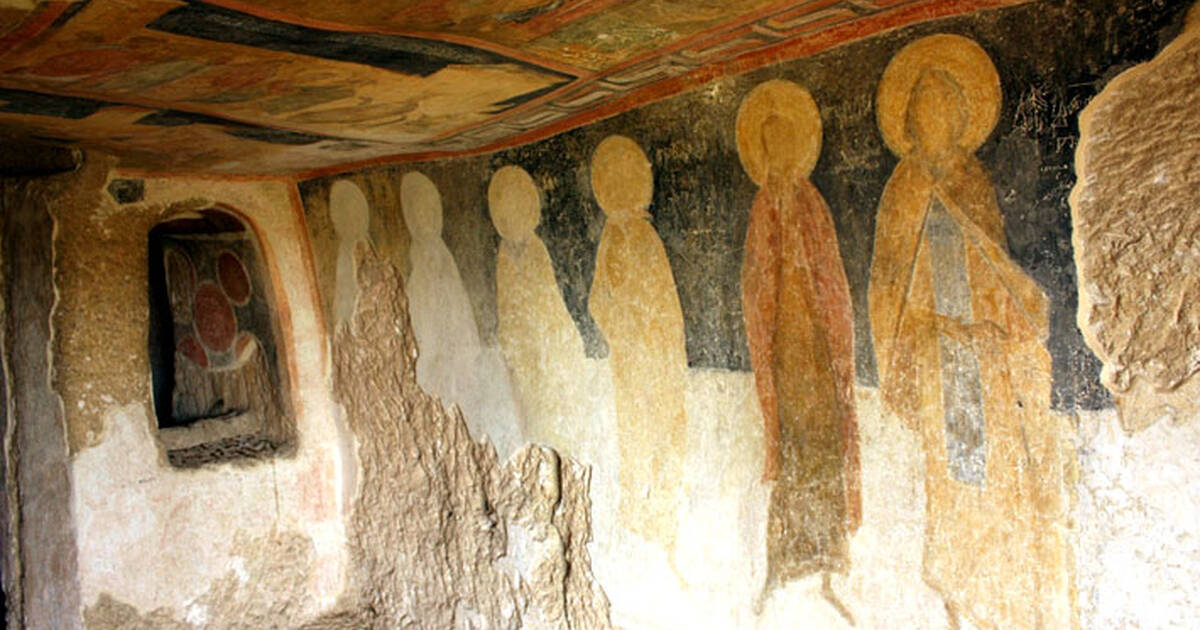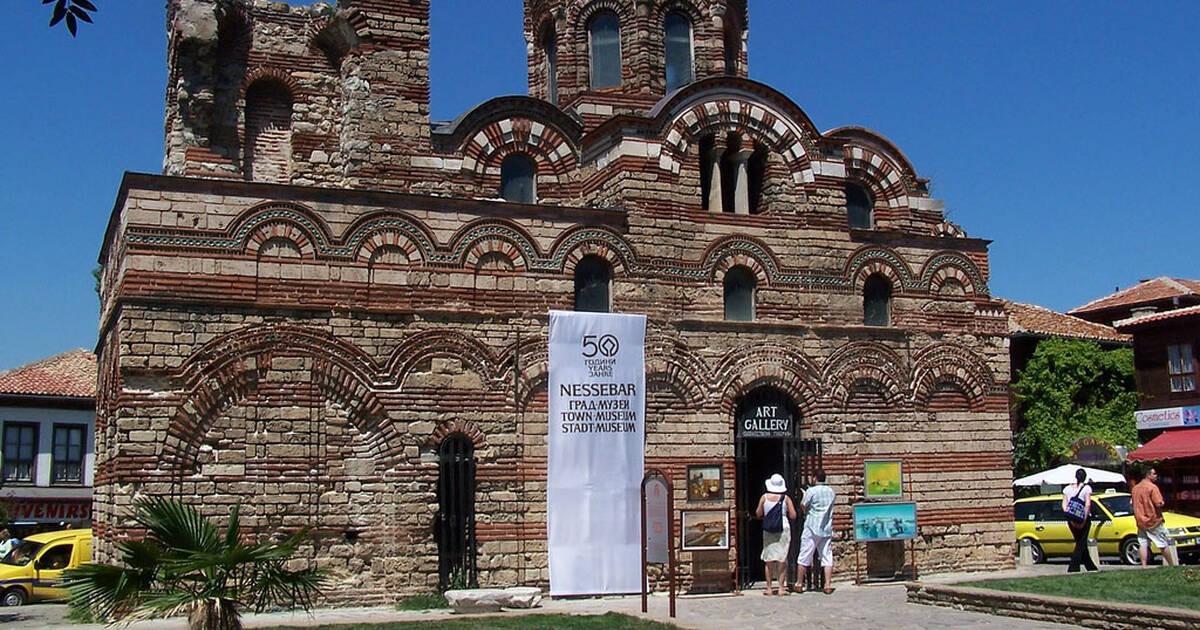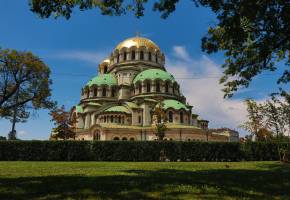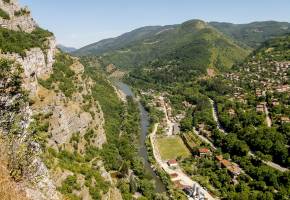UNESCO Cultural Heritage sites in Bulgaria
Bulgaria is the paradise for people interested in history, archaeology, medieval art and architecture. We succeeded in ancient civilizations like Thracians, Romans and Byzantines who left valuable artistic and architectural evidence of their advanced cultures. Besides these treasures, we are proud of our nature and biodiversity. In this article, we are going to speak more about the highly appreciated UNESCO cultural heritage sites in Bulgaria.
Boyana church
Boyana church, Todor Bozhinov / Тодор Божинов [CC BY-SA 3.0 (https://creativecommons.org/licenses/by-sa/3.0)]
This site is located in the outskirts of the capital Sofia in a picturesque area – the foothills of mountain Vitosha. It was constructed in three stages – 10th, 13th and 19th century. The frescoes from the 13th century are well preserved and distinguish as a masterpiece of medieval art. They were painted in 1259 by orders from the landlord Sevastokrator Kaloyan. The church is dedicated to St. Nicolas and scenes of his life and miracles are depicted on the walls of the medieval building. In the yard of Boyana church, you can see enormous sequoias almost 150 years old.Thracian tomb of Kazanlak
Thracian tomb of Kazanlak
Discovered in 1944 in the so-called Valley of Thracian kings, the tomb dates from the Hellenistic period around the end of 4th century BC. It is located in the centre of Kazanlak and the paintings inside are the best-preserved artistic masterpieces from the Hellenistic period in Bulgaria. In the tomb, there is a narrow corridor which goes to a round burial chamber decorated with murals representing Thracian burial rituals and hunting scenes. The history of the tomb is tightly connected with one of the most famous Thracian kings.Rock-hewn Churches of Ivanovo
Rock-hewn Churches of Ivanovo, whc.unesco.org
In the valley of Rusenski Lom river, in northeast Bulgaria, a complex of rock-hewn churches, chapels, monasteries and cells developed in the vicinity of Ivanovo village. This is where the first hermits had dug out their cells and churches during the 12th century. The 14th-century murals testify to the exceptional skills of the artists belonging to the Tarnovo school of painting – one of the most advanced in medieval Bulgaria. The rock-hewn churches are in a protected area with lots of caves and options for alternative tourism with outstanding natural beauty.Madara rider
Madara Rider, Feradz [CC BY 3.0 (https://creativecommons.org/licenses/by/3.0)]
In rural north-east Bulgaria, there is one of the most interesting UNESCO sites in our country – The Madara rider. It is representing a figure of a warrior triumphing over a lion. It is carved into a 100 meters high cliff near village Madara. It was the principal sacred place of the First Bulgarian Empire before Bulgaria`s conversion to Christianity in the 9th century. The inscriptions beside the sculpture tell of events that occurred between 705 and 801 AD.
Ancient city of Nessebar
Ancient city of Nessebar, whc.unesco.org
One of the most beautiful towns on our seaside is the small Nessebar. Situated on a rocky peninsula on the Black sea coast, Nessebar has more than 3000 years of history. The first settlement was constructed by the Thracians and in 6th century BC, it became a Greek colony. There are two main points of interest in the old town – the wooden houses from 19th century and the remains from the Hellenistic period including an acropolis, temple of Apollo, an agora and remains of the Thracian fortifications. There we have few outstanding remains of medieval churches and fortifications dated from the Byzantine empire when the town was of great importance. Nessebar is bordering one of the most well known Bulgarian sea resorts – Sunny Beach.Thracian Tomb of Sveshtari
Thracian Tomb of Sveshtari, Interact-Bulgaria [CC BY-SA 4.0 (https://creativecommons.org/licenses/by-sa/4.0)]
The Thracian tomb of Sveshtari was discovered in 1982 near the small village that gave the name of the site. It is dated back to 3rd century BC and is one of the most beautiful Thracian monuments in Bulgaria. The tomb has a unique architectural décor and painted murals. There are female figures carved in high relief on the walls of the central chamber and the decoration of the lunette in its vault are the only examples of this type found so far in the Thracian lands. The unique Sveshtari tomb reflects the fundamental structural principles of the Thracian cult buildings.
Rila Monastery
Rila Monastery
Rila Monastery is the biggest and most well-known monastery in Bulgaria. It dates back to 10th century and was constructed by the saint-protector of Bulgaria – Saint Ivan of Rila. The monastery is a typical example of Bulgarian Revival art and architecture. Rila Monastery is situated in a protected zone on 1000 meters altitude. The complex includes more than 300 rooms for the monks and visitors, the main monastery church, the Hrelyo tower and three museums. In the main monastery museum, you can see the Rafail cross – wooden carved cross with 650 miniature figures, made in 1802 by the monk Rafail. The main monastery church is one of the most beautiful in Bulgaria and it was built and painted in 1834 by the famous Bansko and Samokov art scholars including Zahari and Dimitar Zograf, who are one of the best painters in Bulgaria during that time.







